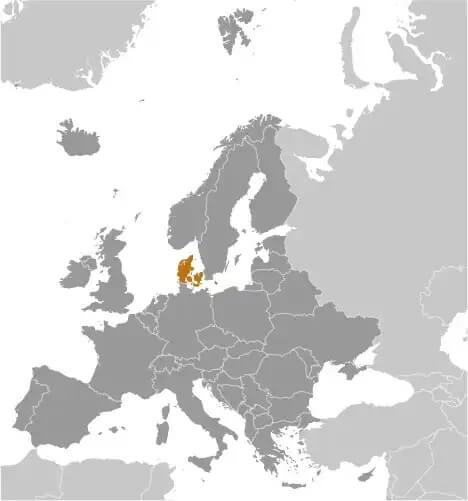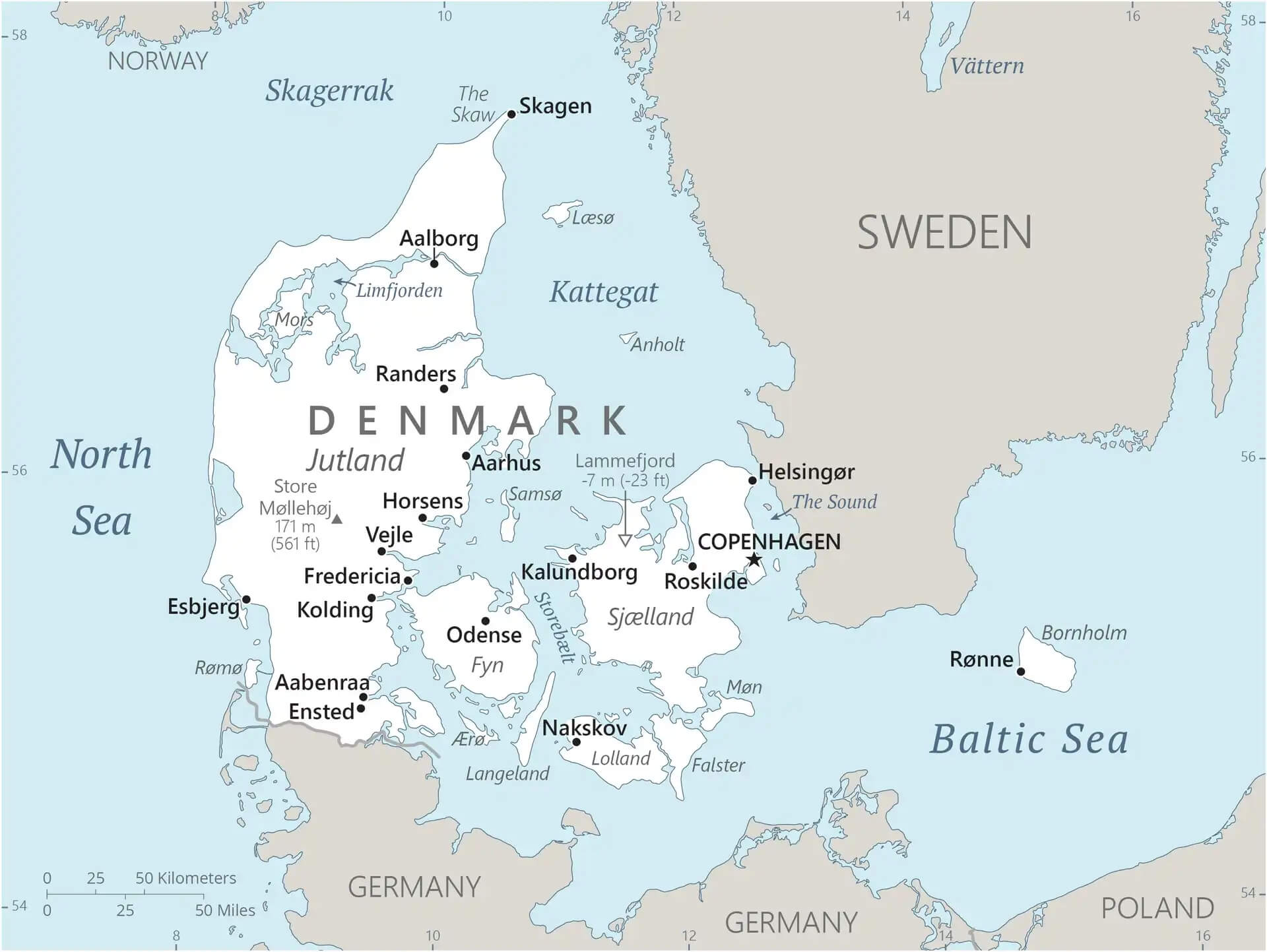World Book
Denmark
World Book Index
86


With a score of 86, the country is ranked 2nd out of 158 countries in the World Book ranking. (more information)
Introduction
Background
Once the seat of Viking raiders and later a major north European power, Denmark has evolved into a modern, prosperous nation that is part of the political and economic integration of Europe.
Geography
Area
total : 43,094 sq km
land: 42,434 sq km
water: 660 sq km
Climate
temperate; humid and overcast; mild, windy winters and cool summers
Natural resources
petroleum, natural gas, fish, arable land, salt, limestone, chalk, stone, gravel and sand
People and Society
Population
total: 5,973,136 (2024 est.)
Ethnic groups
Danish (includes Greenlandic (who are predominantly Inuit) and Faroese) 84.2%, Turkish 1.1%, other 14.7% (largest groups are Polish, Romanian, Syrian, Ukrainian, German, and Iraqi) (2023 est.)
Languages
Danish, Faroese, Greenlandic (an Inuit dialect), German (small minority); note - English is the predominant second language
Religions
Evangelical Lutheran (official) 71.4%, Muslim 4.3%, other/none/unspecified (denominations include Roman Catholic, Jehovah's Witness, Serbian Orthodox Christian, Jewish, Baptist, Buddhist, Church of Jesus Christ, Pentecostal, and nondenominational Christian) 24.3% (2024 est.)
Population growth rate
0.44% (2024 est.)
Government
Government type
parliamentary constitutional monarchy
Capital
name: Copenhagen
Executive branch
chief of state: King FREDERIK X (since 14 January 2024)
head of government: Prime Minister Mette FREDERIKSEN (since 27 June 2019)
Diplomatic representation in the US
chief of mission: Ambassador Jesper Møller SØRENSEN (since 15 September 2023)
Diplomatic representation from the US
chief of mission: Ambassador (vacant); Chargé d’Affaires Mark STROH (since June 2025)
Economy
Economic overview
high-income, EU-member, trade-oriented Nordic economy; growth driven by pharmaceuticals, energy, and services; large share of employment in public sector; fixed exchange rate pegged to euro; strong fiscal position and declining public debt; tight labor market mitigated by migrant workers and higher retirement age
Real GDP (purchasing power parity)
$440.558 billion (2024 est.)
$424.937 billion (2023 est.)
$414.592 billion (2022 est.)
Real GDP per capita
$73,700 (2024 est.)
$71,500 (2023 est.)
$70,200 (2022 est.)
Exports
$299.405 billion (2024 est.)
$276.646 billion (2023 est.)
$283.37 billion (2022 est.)
Exports - partners
Germany 13%, USA 10%, Sweden 9%, Netherlands 7%, China 5% (2023)
Exports - commodities
packaged medicine, fish, vaccines, refined petroleum, pork (2023)
Imports
$252.954 billion (2024 est.)
$243.478 billion (2023 est.)
$245.07 billion (2022 est.)
Imports - partners
Germany 18%, Sweden 11%, Norway 10%, Netherlands 9%, China 7% (2023)
Imports - commodities
natural gas, cars, garments, packaged medicine, refined petroleum (2023)
Human Development Index
The country's Human Development Index (HDI) is 0.962, ranking it 4th out of 193 countries tested. (more information)
World Happiness Report
The World Happiness Report ranked the country 5th out of 158 countries tested with a score of 7.598. (more information)



